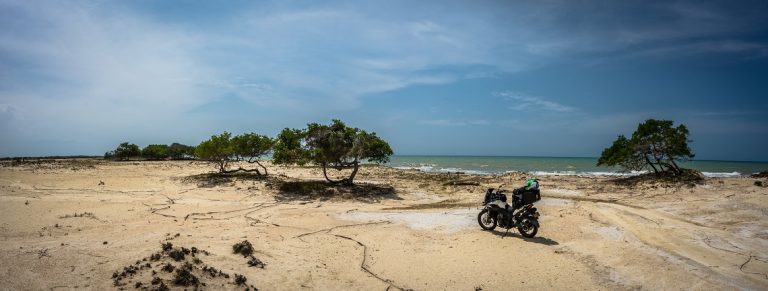Aram Balakjian discovers that there’s more to Colombia than the world that’s portrayed in the Netflix hit series, Narcos, as he explores the country on a 250cc adventure bike
Tell someone you are off to Colombia and you’ll probably be met with disbelief. “Colombia?! Haven’t you watched Narcos?!” When I decided to make it my home for six months in order to learn Spanish and explore the country, I couldn’t help but harbour a little fear. It looked amazing, and the fact nobody else wanted to go there made it all the more enticing, but it was Colombia after all.
I had also neglected to tell people (for fear of adding to their worries of my death by narco-terrorists) that having just got my licence, my ultimate plan was to explore the country by motorcycle.
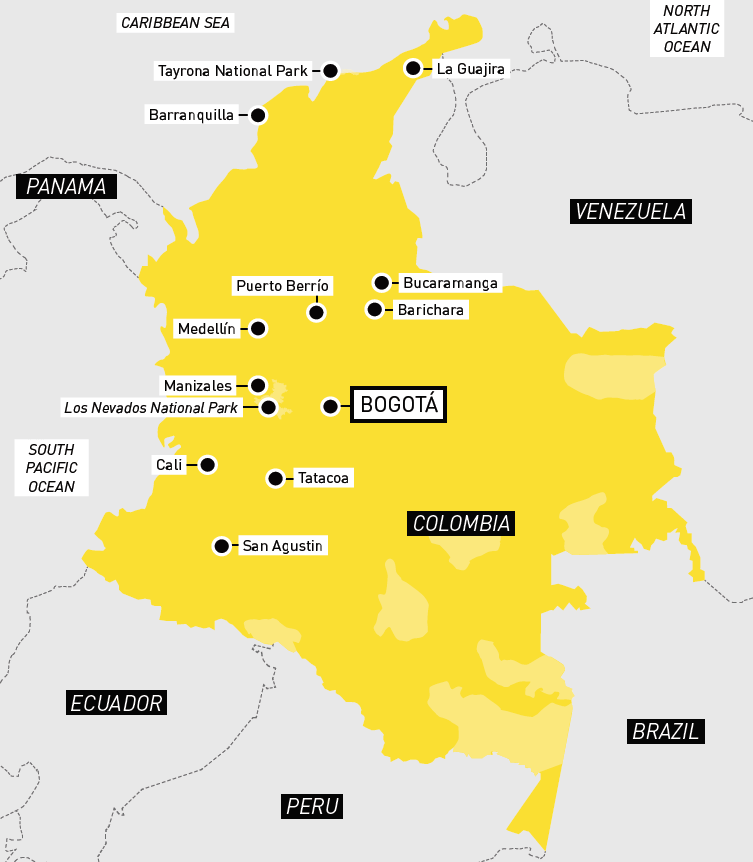
Shortly after my arrival in Medellin, all I could think about was buying a bike. Big bore machines are a rare thing in Colombia.
While 50% of the traffic on the roads are bikes, 99% of them are 150cc and below, and the majority are Chinese made. You see the odd Gringo on an R1200GS, but I couldn’t help thinking that standing out so much might be a bad idea.
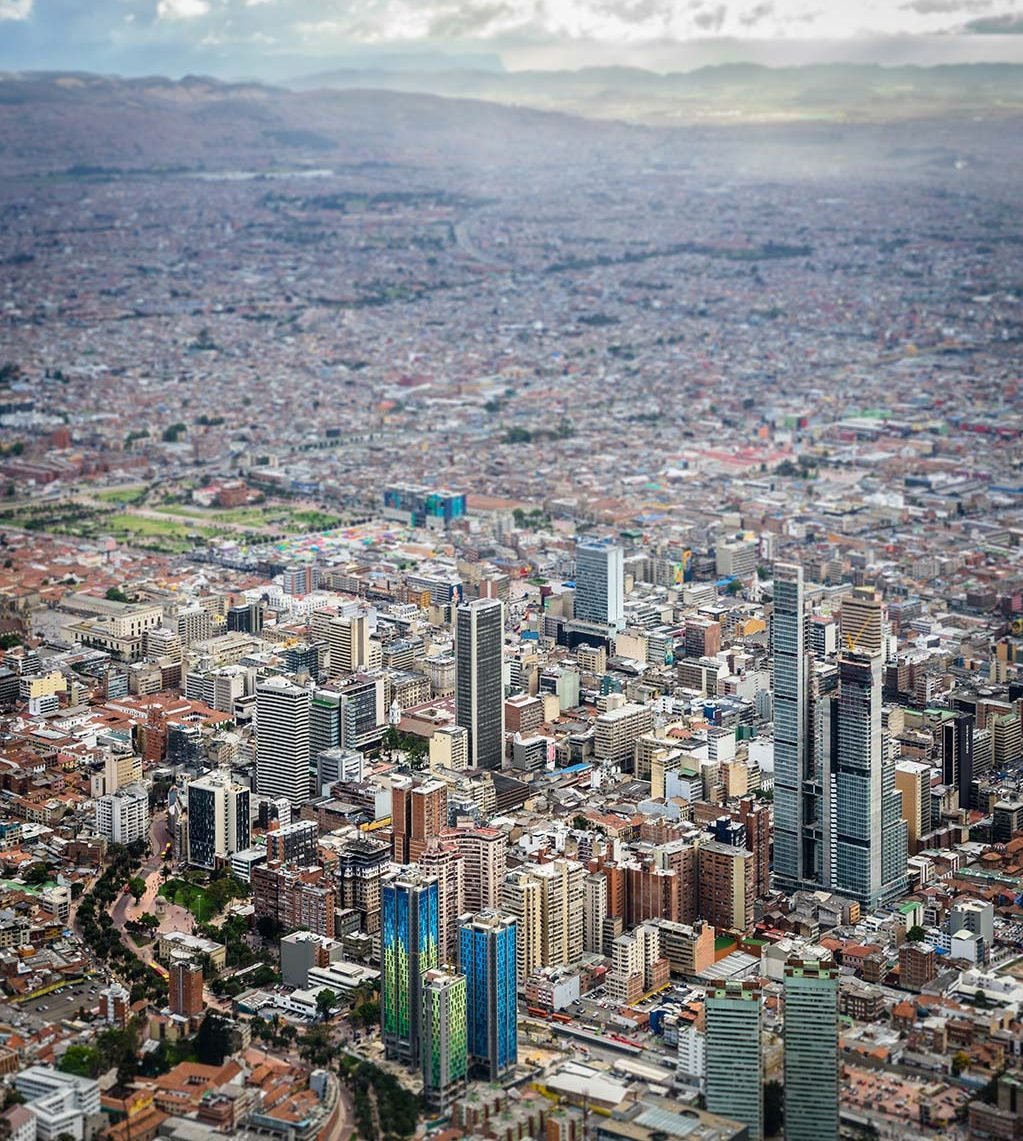
With this in mind, I started looking at a local brand that was everywhere: AKT. They imported cheap white-label Chinese bikes and the model that caught my attention was the 250cc Adventure TT, which had the distinct appearance of a mini GS.
It ticked all the boxes and was an eighth of the price of the big Beemer. Obviously, there would be tradeoffs, but, being new to biking, the low seat height, relatively lightweight and the fact that every town and city had an AKT service centre convinced me.
For four months I rode the AKT in and around Medellin, getting used to it and the crazy traffic. After 600 miles, I was pleasantly surprised. It certainly didn’t feel like one-eighth of a BMW.
Reassured and gaining confidence in my own riding skills (tight, speedy filtering is not optional in Colombia), I started preparing for my trip. I went for saddlebags rather than panniers to keep the bike narrow and the weight down. I also added some handguards for the inevitable drops, a waterproof phone holder for navigation and picked up some decent protective gear.
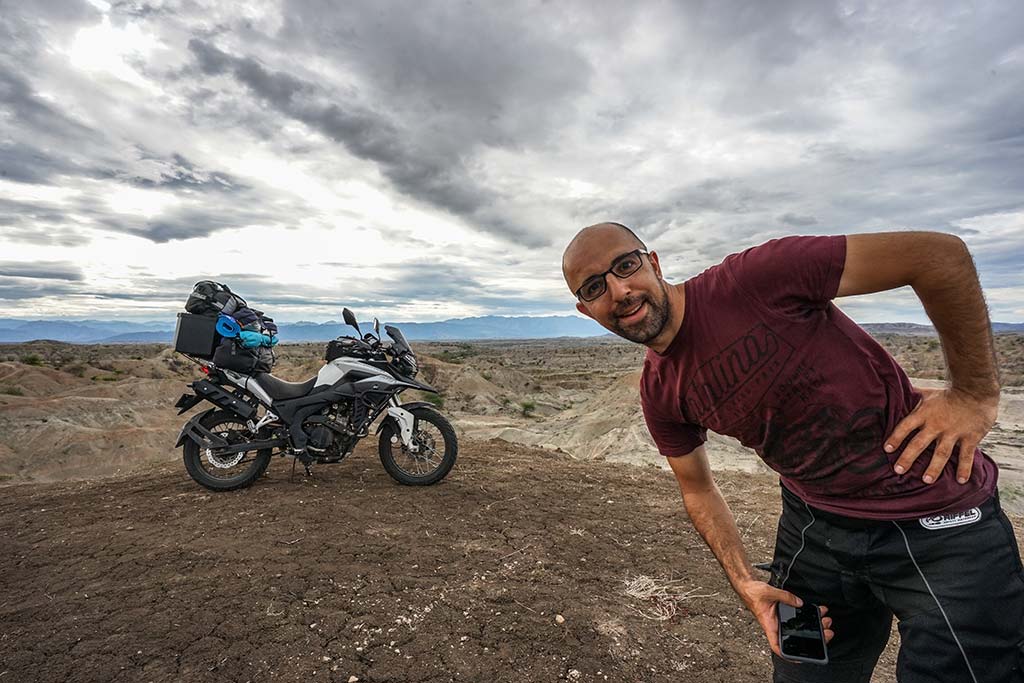
All set, I tried to convince myself I wasn’t scared. What had started as a grand dream had now turned into an exercise in conquering fear. Would I become roadkill to a careless trucker? Leverage for some paramilitary group? Perhaps I’d starve to death, lost in some barren corner of Colombia? Maybe I should just stay in Medellin and practice my Spanish.
I managed to push past the fear and set off heading east to my first stop, Puerto Berrio, a modest four hours away. Ease myself in I thought.
There was no need. I reached the town by lunchtime and after a quick wander around, decided to push on to Bucaramanga. It was nightfall when I arrived in the city and I was feeling a little disappointed. There had been little of interest along the way and I went to bed hoping the trip would not turn into a huge anti-climax.
The following day my fears were allayed. Riding down to Barichara, described as Colombia’s ‘most beautiful village’, I passed through Chicamocha Canyon. At 1.2 miles in-depth, it’s Colombia’s own Grand Canyon and my first experience riding through an epic landscape.
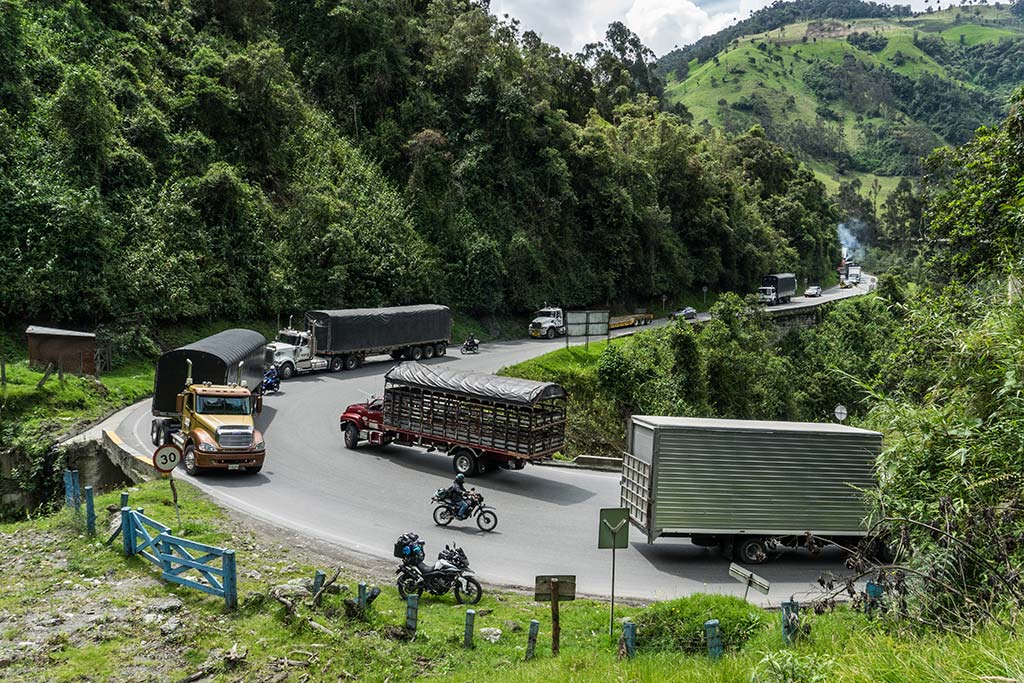
The brand new and almost deserted road spun me through the canyon in what seemed like evermore awe-inspiring ways. I don’t know if every biker has a day that will forever be the moment they knew that motorbiking was special, but for me, it was that day riding through Chicamocha Canyon. A car seemed like that ex you can’t understand why you were ever in love with.
My journey from Barichara took me back west towards the ‘Zona Cafeteria’ (the region responsible for producing Colombia’s top export: coffee), crossing cold wet mountains, a scorching hot valley and back into the foothills around the volcanic national park Los Nevados National Nature Park.
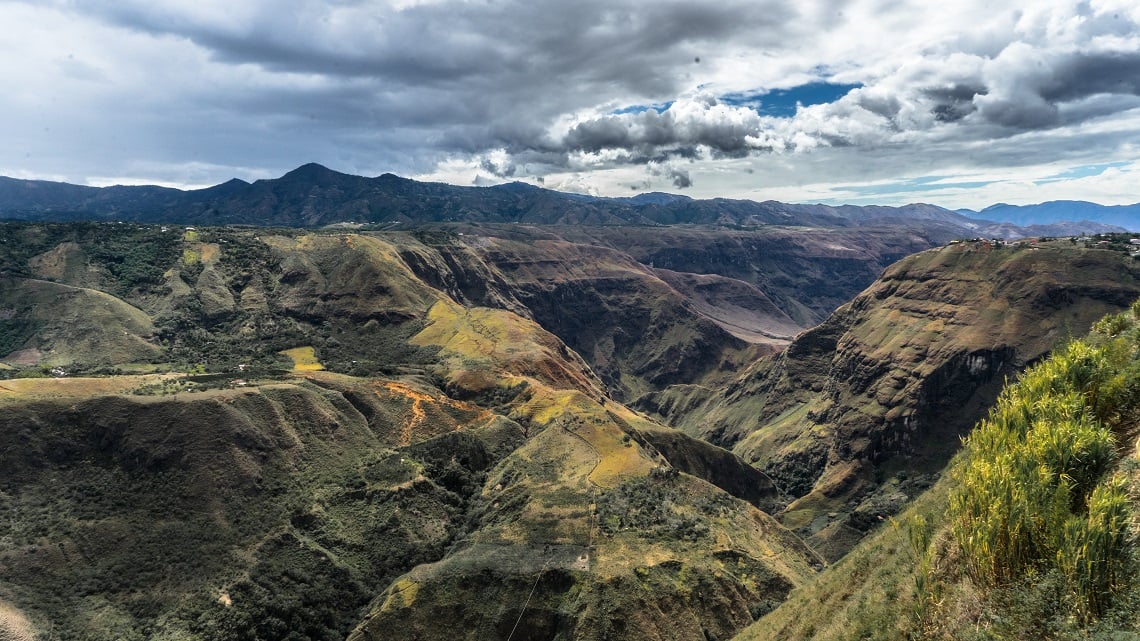
As I ascended from the quirky village of Murillo, the road turned to dirt while the clouds shifted around me like giant airships, partially obscuring the views of the unimaginably vast landscape. It felt like riding through the sky into a prehistoric vista of towering brutalist rock formations, decorated by alien plants and steep narrow waterfalls, cascading down through the clouds to the valley floors below.
As the road became rougher, crossing streams and negotiating deep ruts and troughs, I understood that a motorbike takes you to places you simply wouldn’t attempt in bigger modes of transport. Even a 4×4 would have been hard pushed to get here.
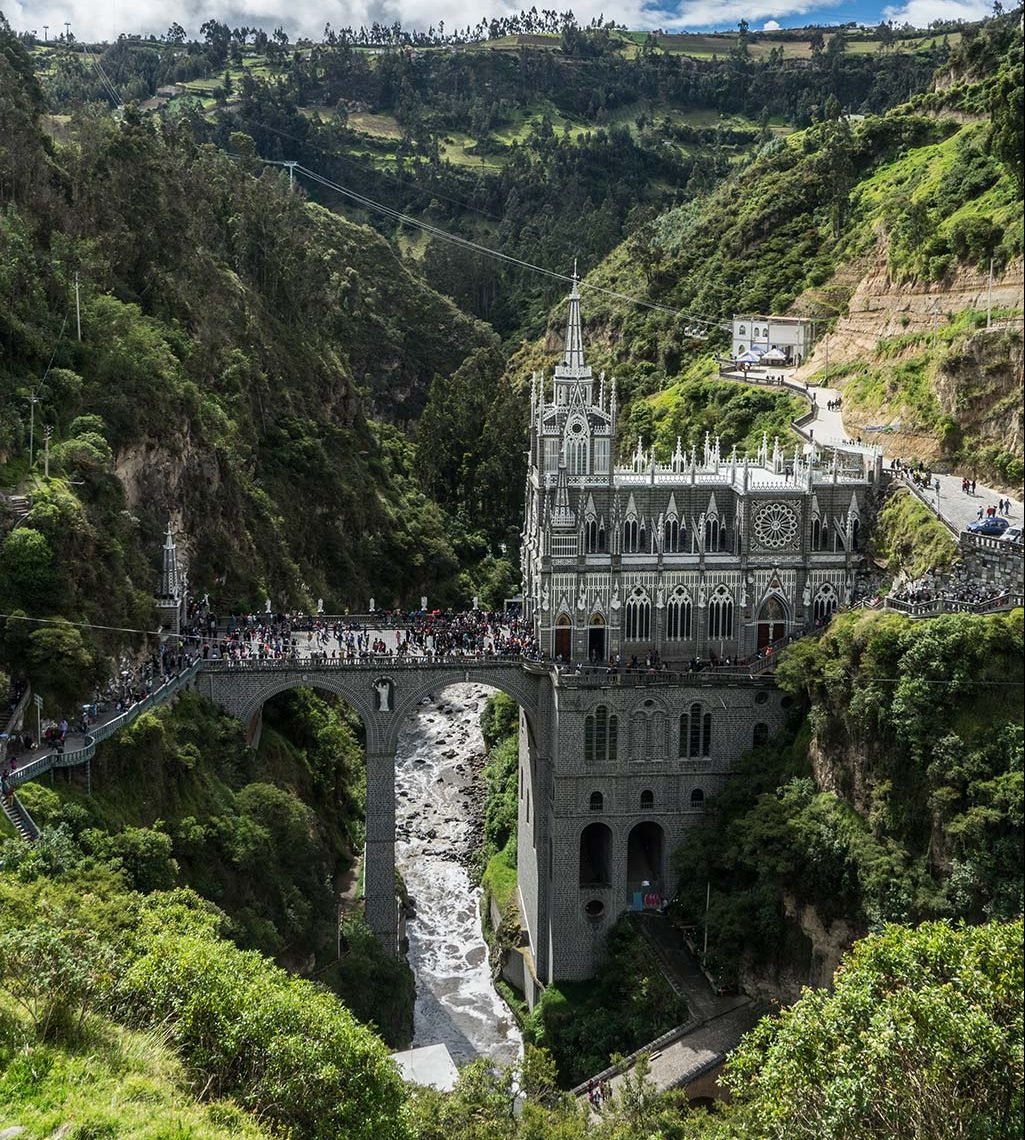
The following morning I was treated to my first problem with the bike. I had returned to the same track to catch the morning light when the engine became harder and harder to start until it refused altogether. If there is a worst place for your bike to need a push, a deserted dirt track with a steep drop on one side has to be up there.
As I grabbed the handlebars and started to push, my ‘light’ bike may as well have been an overloaded GS. I managed to pick up a little speed, dropped the clutch and the bike lurched into life, giving me little more than a moment to stop us tumbling over the edge by pulling in both the clutch and brake. This routine repeated itself numerous times. My admiring tone for the little Chinese GS was quickly souring.
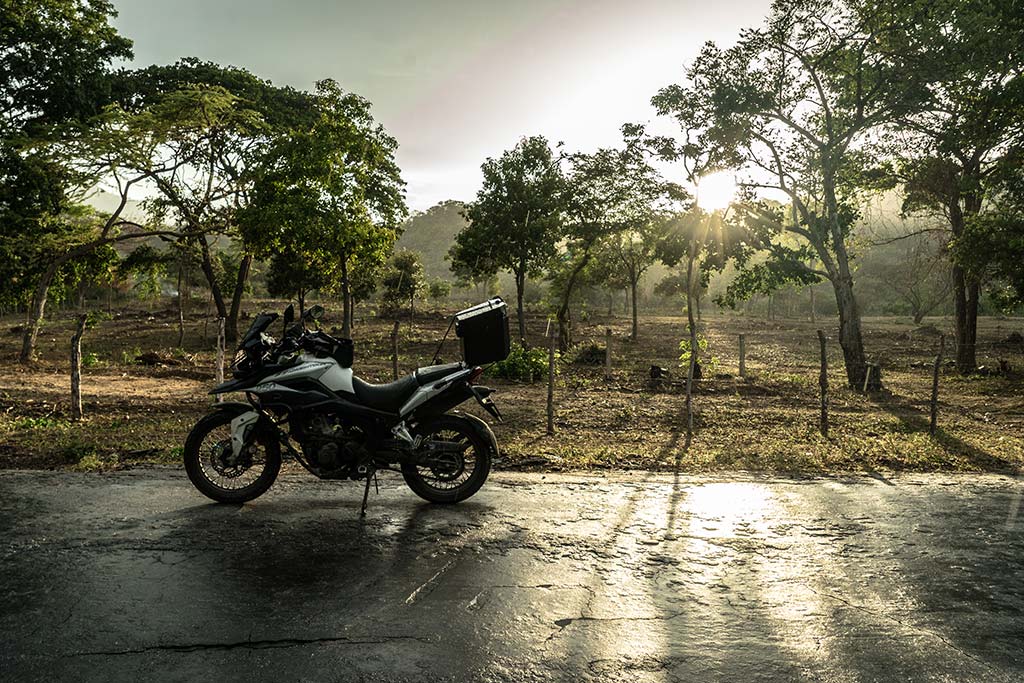
After a service in nearby Manizales however, the bike was back to its best and I continued on to explore the beautiful Coffee Region. From the world’s tallest palm trees to touring coffee farms and hiking to waterfalls there was lots to do. But deep down, I just wanted to be back on the road.
After a few days, I gave in and headed east to the capital Bogota, traversing Colombia’s busiest road which connects the Coffee Region to the capital. Consisting of 40 miles of steep winding mountain pass, it was almost back to back trucks crawling along at walking pace.
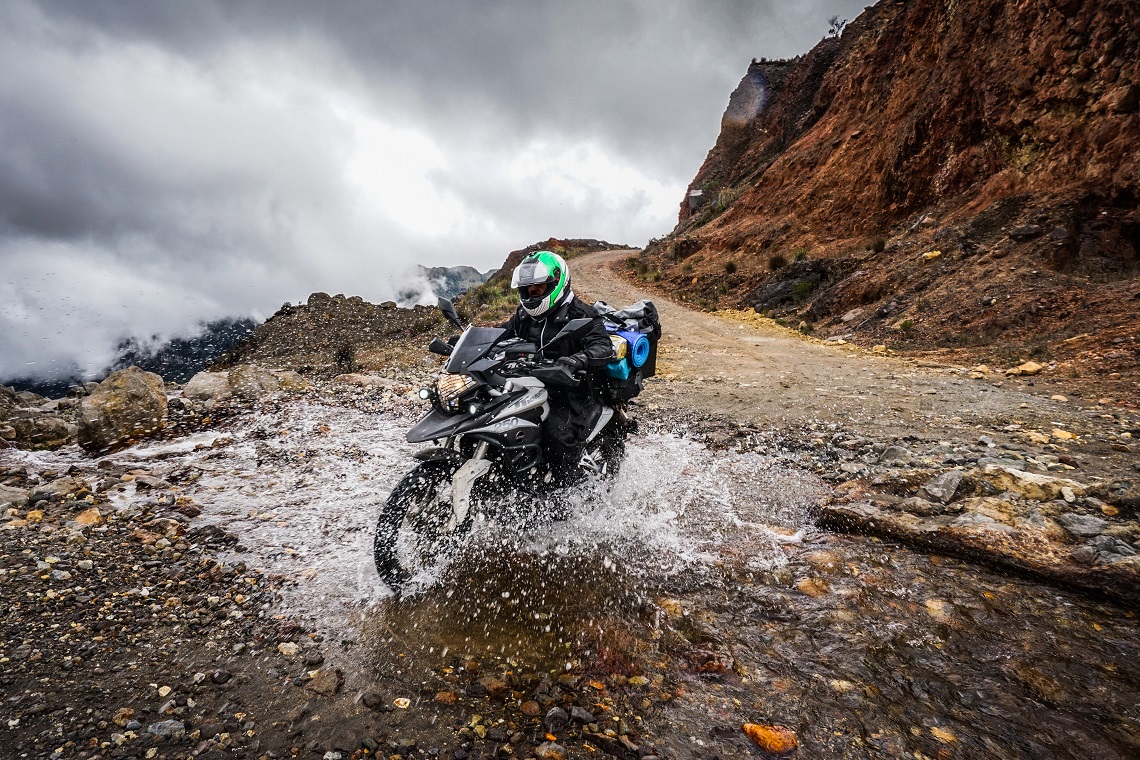
Sounds like a biking nightmare, but in fact, it was rather fun. The road is reasonably wide for the most part and even with my modest 25bhp, overtaking became somewhat of a sport.
Given the amount of bikes in Colombia, larger vehicles are far more aware of you, so passing on either side is normal, giving the opportunity to dip and dive in relative safety.
Add to this the countless food sellers pushing their produce at passing windows and the “corner boys” waiting at each hairpin directing traffic in the hope of some change being flung at them and you end up with a unique, almost carnival-like atmosphere. I arrived in Bogota later that evening at the perfect time to experience its infamous rush hour traffic. Not quite so much fun.
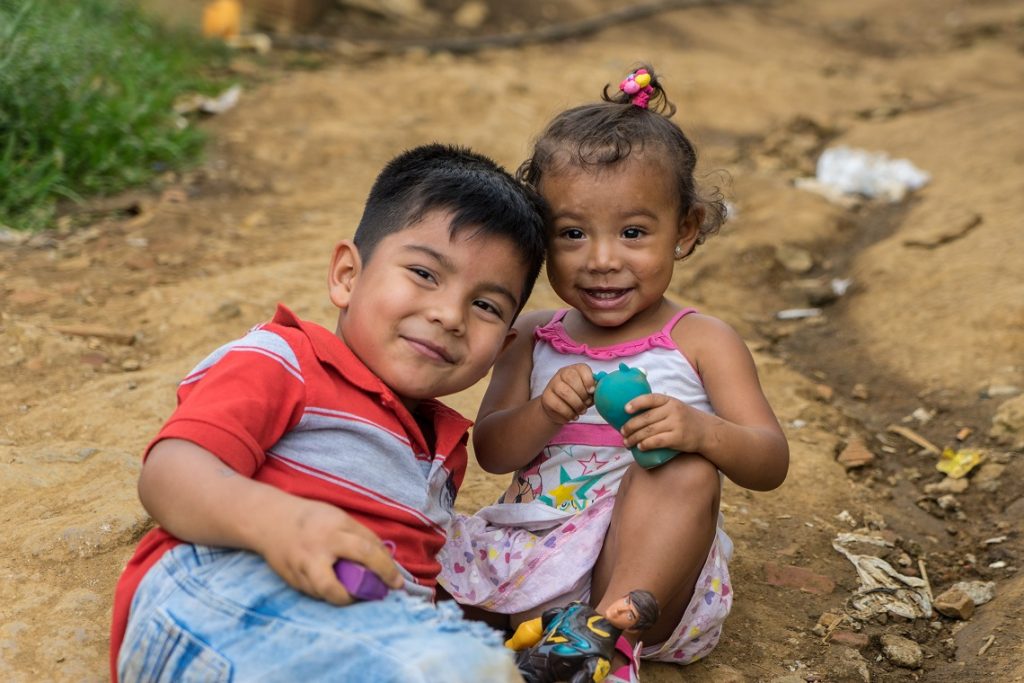
After a short and somewhat uninspiring stay in the sprawling capital, I headed south. My route took me to the border with Ecuador, back up through Cali and on to the coast. There was simply so much worthy of mention in this part of my trip.
The incredible desert rock formations in Tatacoa, the ancient stone carvings at San Agustin, Colombia’s most dangerous road ‘The Trampoline of Death’, akin to the infamous Death Road in Bolivia, Las Lajas Sanctuary, a beautiful Church built into the side of a steep canyon, salsa dancing (badly) in Cali, the flatbed ferry at Manague, electrical storms in Mompos.
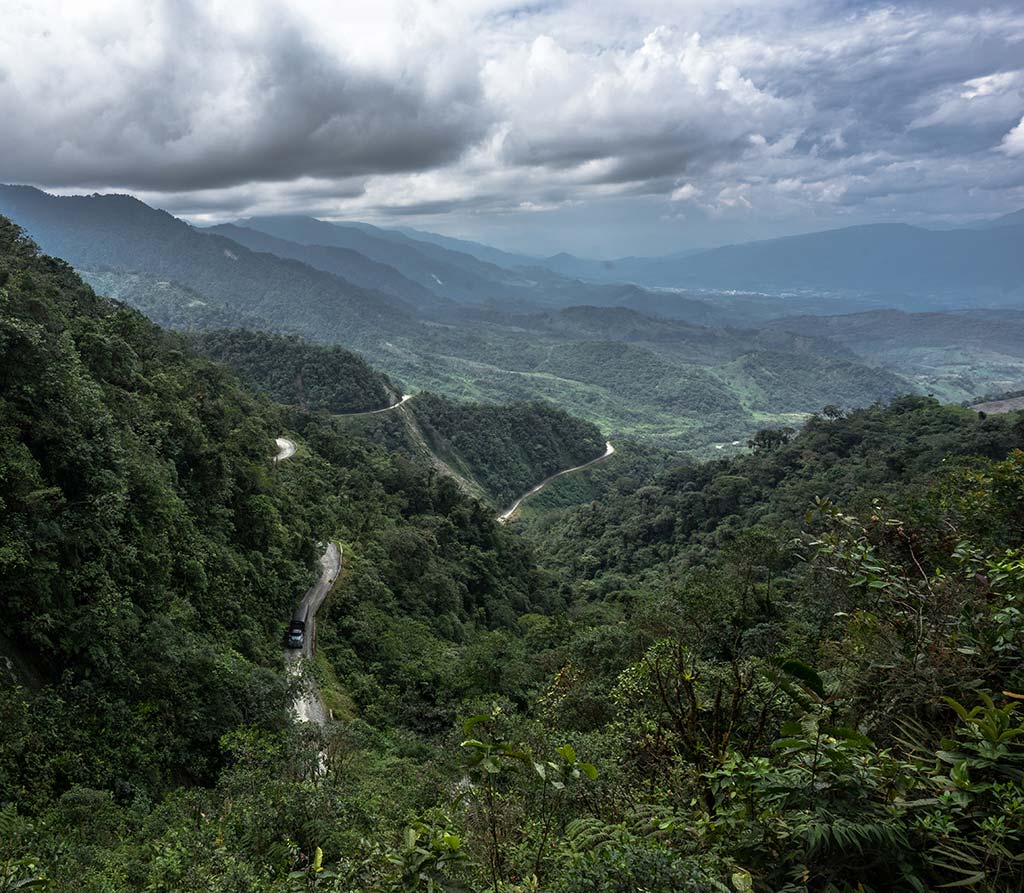
The list goes on. As I headed north to the Atlantic Coast for the final leg of my trip, I couldn’t believe that all people knew of Colombia was coffee and cocaine. To me, they were simply footnotes on a long list of incredible things the country has to offer. And, the most incredible part was still to come.
Before we get to that, I feel the need to share an important lesson that I learned in a somewhat unpleasant way. Finding places to sleep in Colombia is super easy, little hotels are everywhere and they are cheap too. Outside the touristy areas expect to pay as little as Åí5 for a double en-suite room. But, there is an important distinction to make when selecting your bed for the night…
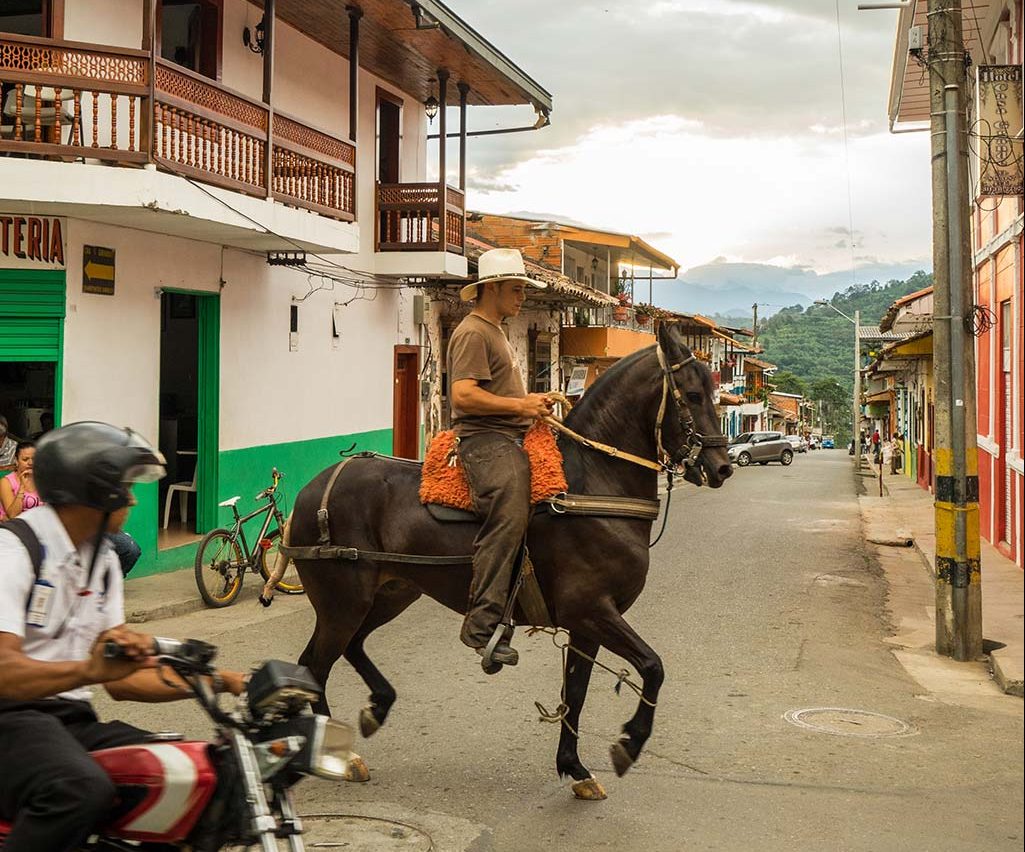
It had been a long day riding and, after dark, I decided to stop and get some kip. I saw what looked like a decent enough place called ‘Motel Flores’. Perhaps I should have realised something was amiss when the owner seemed confused that I wanted to sleep the night. He thought for a minute before giving me a price. I quickly accepted; all I wanted was to get off the bike and have a shower.
I rode into a garage which he closed behind me, some concrete stairs to the room lay in front of me. Unusual, I thought, but whatever. Later as I lay in bed, I couldn’t help but notice the room had the appearance of a 1970s low budget porno: a giant ornate mirror opposite the bed, peeling flowery wallpaper and bright mismatching linen.
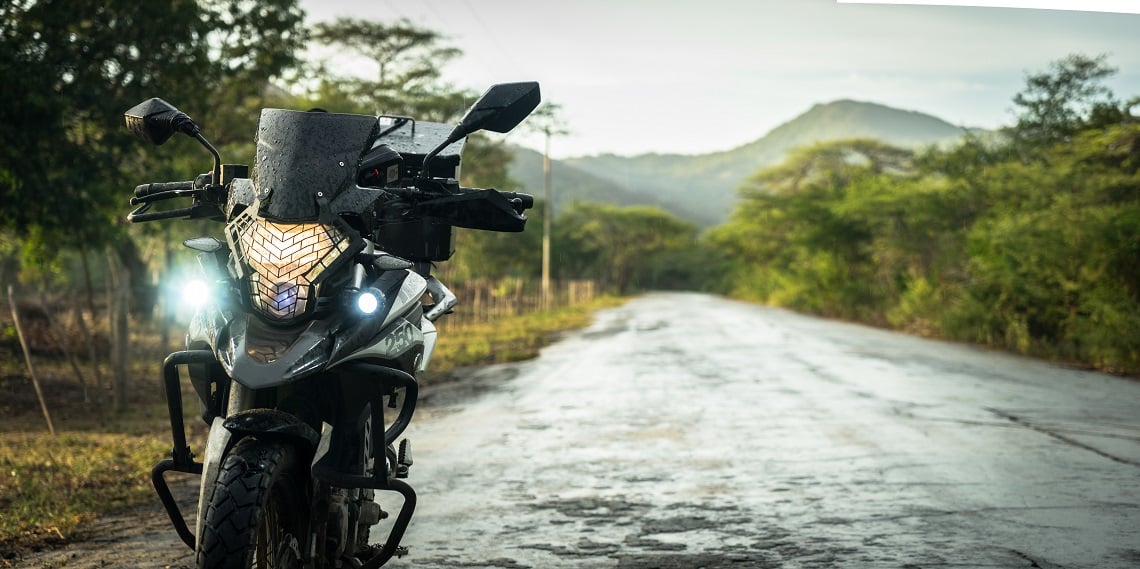
A torn, poorly printed sign was sellotaped to the wall beside the bed. As I read it my heart sank; it was hourly prices for the room. There was no price for the night. As I turned to the other side, I saw that within arms reach was an industrial-sized toilet roll dispenser. I quickly got up and peeled back the sheet I was lying on to reveal a strategically patterned plastic mattress.
I was in a ‘love motel’ which had very little to do with love. It was too late to leave, so I put all the linen I could find between me and the mattress and slept fully dressed. Turns out in Colombia a ‘motel’ is not like in the movies. Well not the ones you watch at the cinema anyway. I left early the next morning, heading speedily towards the coast.
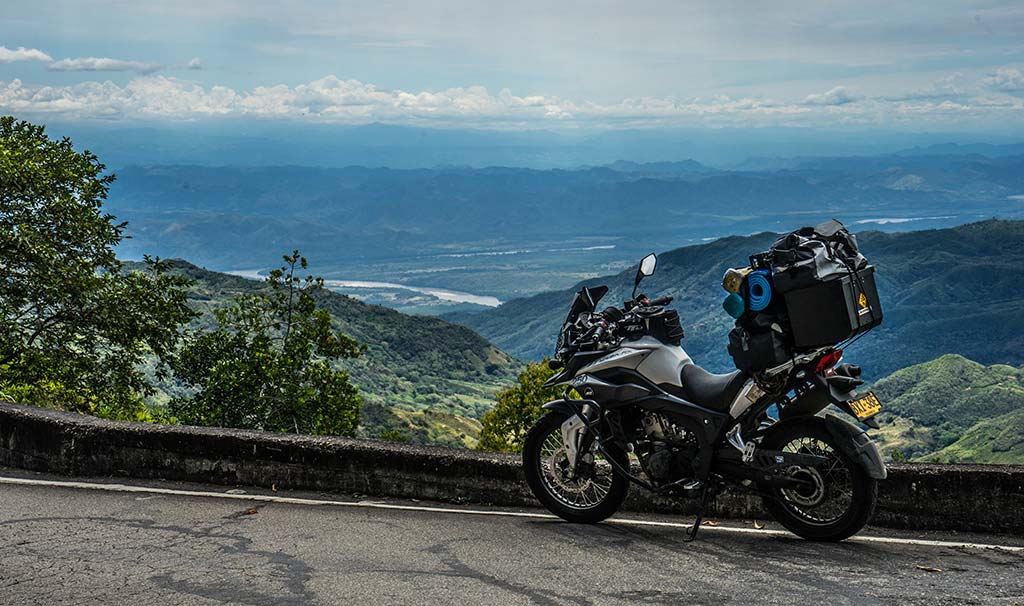
As with the other parts of the country, there was a lot to love about Colombia’s Atlantic Coast, from the gorgeous colonial old town of Cartagena to the stunning beaches at Tayrona National Park and Palomino. But it was my final stop, La Guajira, that would stun me most.
Forming the northern tip of South America, La Guajira is desolate and isolated. One of the few places in the world where a desert meets an ocean, it is without doubt the most incredible place I have ever been.
Getting there, however, was not so great. It turns out that when it rains (which it did. A lot) it’s a biking nightmare. My lack of experience with mud certainly didn’t help, nor did my road-biased tyres. A journey that should have taken three hours took closer to six.
At one point, riding over a large straight road made of wet mud, five miles took me an hour. Eventually a helpful local pointed me in the direction of a train line that I could ride adjacent to, with a comparably heavenly surface of loose gravel.
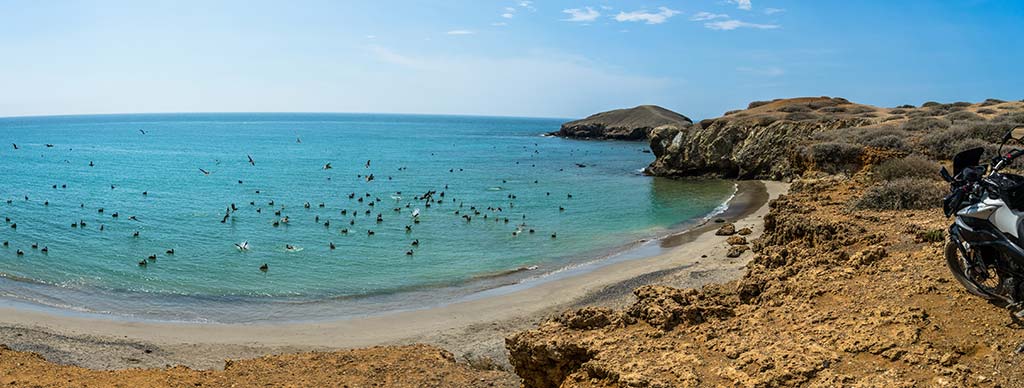
The remaining 20 miles took me two hours in the pitch black, and, although things dried up, the straight road became a winding sandy desert track that was hard to follow as it continually split and converged into other tracks. Exhausted from repeatedly picking up the bike and the fear of getting lost in the darkness, I approached the last few miles feeling drained.
All I wanted to do was get somewhere. Emerging from the dark ahead of me I saw a wooden shelter with a light illuminating bottles of gasoline. My fuel gauge was showing low. I might as well stop and get some I thought, then I won’t have to worry tomorrow. What could go wrong?
I stopped close by and looked around. Out of the darkness a girl, who couldn’t have been more than eight, came jogging towards me. As I lifted my tank bag to reach the filler cap I could hardly see anything, so I suggested I move the bike under the shelter to make filling up easier. The girl nodded as I put the bike into gear and rode towards the light.
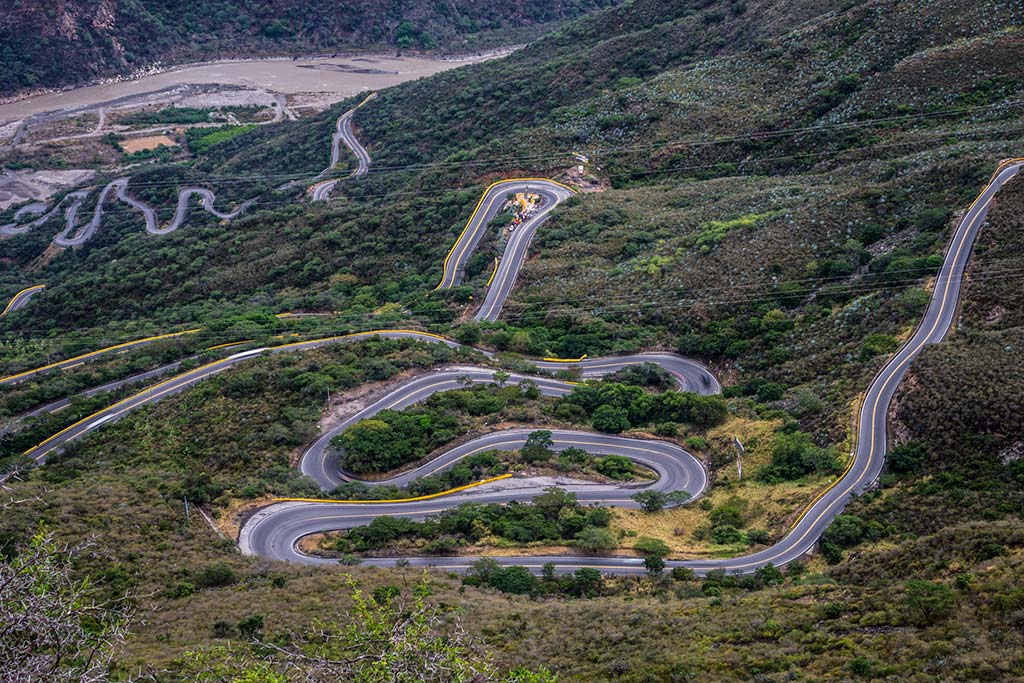
What I had failed to notice was that the roof of the shelter was lower than the top of my helmet. Doh! My head hit the roof, followed by the bike and myself falling into the table of fuel bottles.
Thankfully, nothing but my ego was spilled, as the girl burst out laughing and I stood up in shock at my own stupidity. We lifted the bike, and she poured a gallon of gas into the tank, before seeing me off with “Que Lindo!”, which means “how cute!” Sigh.
The next day, still recovering from the previous day’s ride and having seen nothing of what surrounded me, I headed out to explore.
The place was untouched. Vast plains of barren, beautiful sand halted only by faultless beaches and the deep turquoise of the Atlantic Ocean. Pelicans flew overhead, periodically diving into the water attempting a catch, while swarms of tiny crabs scuttled around the unspoiled sands. It was simply incredible.
Once again, however, my inexperience in soft surface riding provided entertainment for passersby as I struggled in the sand; falling, getting stuck and generally looking like I didn’t know what I was doing. Which I didn’t. But I didn’t care. It was such a privilege being able to explore a place like that by bike that nothing else mattered.
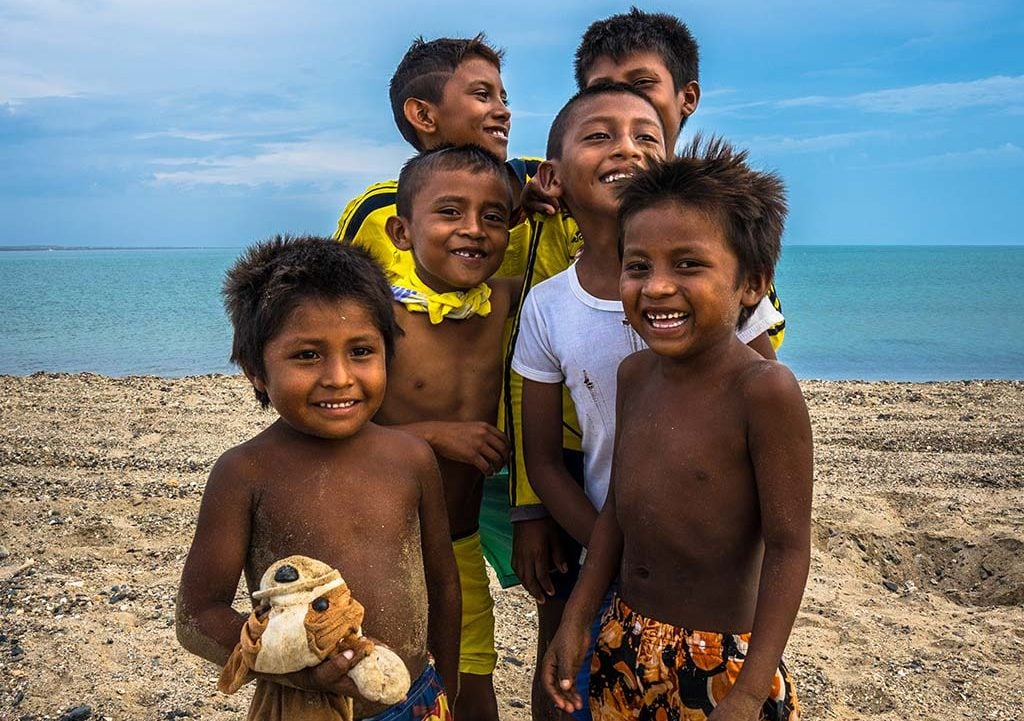
Thanks to the rain holding off, my exit from La Guajira was far less eventful than my entrance, and the long straight roads that formed the final 600 miles of my trip back to Medellín gave me plenty of time to reflect on my first biking adventure. It certainly hadn’t been easy. At times it was really lonely and I had wanted to share the experiences I was having with someone.
Often, the long rides really took it out of me and I couldn’t wait to get off the bike by the end of the day (seat comfort was another tradeoff of the AKT). But by the next morning, I always wanted to get back on.
The challenges I faced every day meant the experience became a genuine character-building exercise, continually forcing me into a process of pushing my own limits and giving me time to reflect on each new experience. Ultimately it proved to be the most valuable and enriching adventure of my life so far.
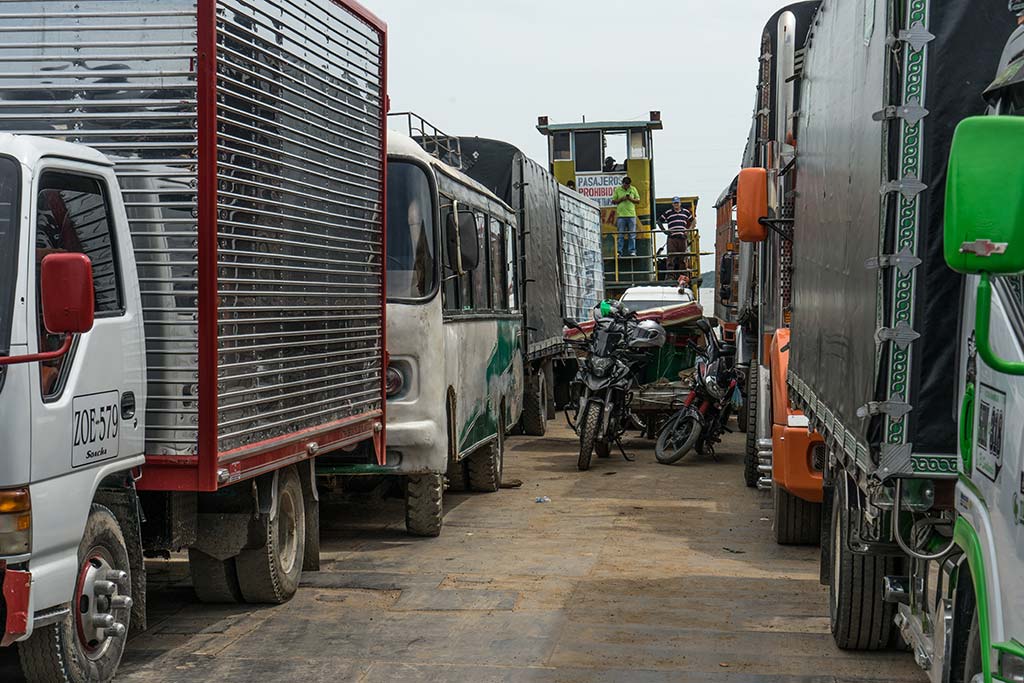
As for Colombia itself, it’s such a long way from the world depicted in Narcos that it’s no wonder Colombians themselves are sick of talking about cocaine and Pablo Escobar. They have moved on and now it’s time the rest of us did the same. Not only is it safe, but the beauty, the people and the variety is overwhelming.
Sure the food is dull, the towns and cities uninspiring (Medellín and Cartagena are the exceptions) and often things are way more complicated than they need to be. But, if you let her, Colombia will take you on a magical journey through lands you couldn’t have imagined existed all in one place, connected by a plethora of roads perfect for experiencing the joy of riding a motorbike.
Quite simply, it’s an adventure biking paradise.
The bike
Towards the end of the journey the AKT 250 AdvenTour felt like every time I got on, another piece had fallen off. She had looked up to the job, but it was all show. Screws vanished, bits got bent and broken, and the starting issues had returned. At one point the exhaust was a few threads of a single screw from throwing itself onto the road.
But to be fair, I always arrived at my destination, and not once was I prevented going where I wanted to go. On my return to Medellín I got 55% of what I paid, meaning I lost a little over £1,000 for six months and 5,300 miles of ownership. When you consider renting an R1200GS for a week costs the same, it’s hard to complain.
Not to mention when I did need repairs, they were insanely cheap. A mirror and clutch section: £8. Scheduled services: £10. Muffler guard: £12. They say you get what you pay for, but in this case, despite the problems, it almost felt like I got more than I deserved.
Travelling in Colombia
Visas
90-day visa issued on arrival. Can be extended to 180 days.
Language
Spanish. English is not commonly spoken outside tourist hotspots such as Medellín and Cartegena.
Vaccinations
Hepatitis A, Tetanus – others advisable depending on areas visited.
Punctuality
Patience is a virtue in Colombia in every way. Don’t expect things to work as you would want them to and this certainly applies to punctuality.
Where to go
- Medellín’s Communa 13
- Salento’s Valle de Cocora
- Chicamocha Canyon
- Jardin
- Stargazing in Tatacoa desert
- The beach in Tyrona National Park
- Cartagena’s Old City
- Bogota’ Monserrate viewpoint
- Cabo de la Velo in La Guajira (for the adventurous only!).
Traffic
Outside the cities there’s not too much traffic, though overtaking large trucks is a common necessity. In the cities care needs to be taken as the style of driving is very different to the UK. Personal space does not exist, nor for the most part do lanes. For bikes, lane splitting and filtering at any speed is the norm. You may get stopped at the regular police and military checkpoints but, once they see you are a foreigner, all they will have to say is “Welcome to Colombia!”
Currency
Colombian Peso.
Budget
£20 a day will have you living like a king in the less touristy parts, while up to £100 will be needed in hotspots like Cartagena.
Fuel
Sold by the gallon at American prices, meaning it’s super cheap. Petrol stations are everywhere so no need to worry about carrying fuel.
When to go
Colombia is on the equator meaning it doesn’t have seasons as such. Some areas like Medellín are completely season neutral, while others have a little more rain at varying times of the year. However, temperatures change more by altitude than by time of year.
Food
Typically dull, but a few dishes to try:
- Arepa con queso is a nice cheesy snack
- Empanada
- ‘Bandeja Paisa’ – carbs on a plate
Tipping
Appreciated, though not necessary.
Getting there
Avianca fly to Bogota daily from Heathrow for under £500 return. From there you can fly to almost any part of Colombia.


